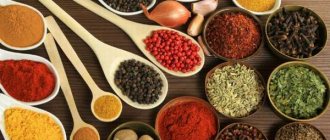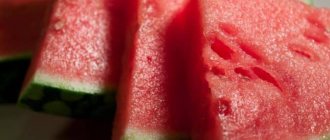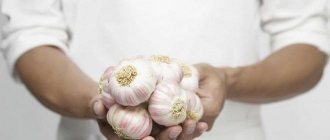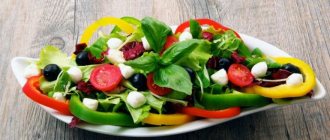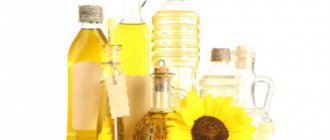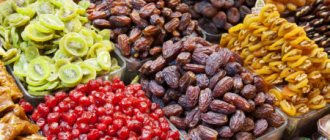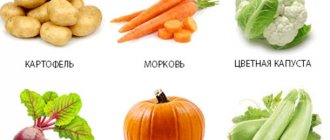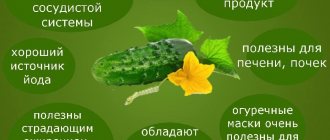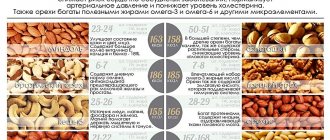Can you eat bananas for pancreatitis or not?
This fruit is present in the diet of most people, because it is available to us at any time of the year. Thanks to its tender and satisfying pulp, it is recommended for use by people with diseases of the gastrointestinal tract. It has a gentle effect on the mucous membranes, prevents constipation and flatulence, and improves peristalsis.
If you have been diagnosed with pancreatitis, before consuming each new product in your diet, you must make sure that it will not provoke an exacerbation of the disease. The same goes for bananas.
In what quantity can it be consumed? If you have pancreatic diseases, you have to give up many foods, as they can cause an exacerbation. Doctors do not prohibit people diagnosed with pancreatitis from eating bananas, so you can include the fruit in your diet. But to avoid possible dangers, you need to eat bananas in a certain quantity and form.
Why should you be careful with bananas? They contain a large amount of sugar, which leads to active work of the pancreas. You need the gland to be at rest. When the organ is too active, all the symptoms of pancreatitis appear.
Is it possible to eat bananas with pancreatitis or not? You can, but you need to cook them properly. The best option is in the form of banana puree; they can also be baked in the oven, added to porridge, made into a soufflé or homemade ice cream.
Advice! A banana smoothie is very convenient and tasty, just chop a banana in a blender and add your favorite ingredients (kefir, low-fat milk or fermented baked milk). If your body does not digest dairy products well, replace them with coconut or almond milk.
Why grind fruit or process it at high temperatures? This way you reduce the amount of fiber and it is digested faster. The fewer enzymes the pancreas produces to process food, the better - this way you will protect it from overload.
How much fruit can you eat? It is enough to consume 1 banana per day, no more. Divide it into 2 servings so as not to overload the gastrointestinal tract. It is better to eat fruit between meals, as a snack.
Start with a minimal amount, include only half a banana in your daily diet. If you do not observe any worsening of your condition, you can increase the dosage to 1 banana per day. Avoid eating unripe fruits; they place too much stress on the pancreas. Choose ripe bananas; they should be soft and flavorful.
When is the best time to eat bananas? Since the fruit takes several hours to digest, try to eat it in the first half of the day. Not the best option - in the evening, after dinner.
Is it possible to eat dried bananas if you have pancreatitis? Undesirable as they are too hard and contain a large amount of fiber. But you can make a delicious compote from dried fruits. Don't throw away the boiled bananas and eat them, they are soft and will not cause health problems.
Exacerbation of pancreatitis: giving up bananas? During an exacerbation of the disease, doctors strongly recommend completely removing bananas from the diet. Fruit will only worsen the situation, so put off the treat until the disease “subsides.”
You can and even need to eat bananas for pancreatitis; in minimal quantities they will improve the functioning of the digestive system and eliminate inflammation. But if the disease worsens, you will have to give up fruits until you recover.
Bananas and acute pancreatitis
Naturally, during an attack of the disease and the first days after it, there can be no talk of any bananas. However, this exotic fruit is recommended by nutritionists to begin returning to a normal diet for patients with pancreatitis.
A few days after the attack is over, doctors allow patients to drink juice diluted with boiled water. However, it is impossible to squeeze juice out of bananas on your own, and those products that are presented on store shelves probably contain dyes, preservatives or flavors that can cause a reaction from the inflamed pancreas. Therefore, it is better to choose other drinks, and introduce bananas into the diet as such about a week or a little more after an exacerbation. It is recommended to consume the fruit baked or pureed in quantities of no more than one piece per day.
Is it possible to eat bananas when remission has occurred?
For pancreatitis, a wave course is typical, i.e. the exacerbation stage is replaced by a period of remission. Long-term remission allows a sick person to fearlessly include bananas in their diet.
There are several rules to avoid another exacerbation. The recommendations will be as follows:
- banana can be eaten only during breakfast and no more than one fruit per day;
- Fruits should be introduced little by little, tracking changes in general well-being;
- to reduce the food load on the inflamed pancreas, the pulp must be crushed into puree;
- Before consumption, it is advisable to bake or steam bananas.
You can drink juice and smoothies every day.
During the remission stage, the ways of consuming the fruit are expanded, but you are not allowed to eat more than one banana per day.
During the period of remission, you can eat not only pureed and baked fruits, but also make fruit cocktails, fruit salads and smoothies, add bananas to milkshakes and desserts. It is allowed to put them in porridges and make them into jelly and soufflé.
You can eat dried bananas, just remember that if you have pancreatitis, frequent consumption of sugar is contraindicated.
How much should I use?
When there is an acute period of the disease, you should not eat bananas in the first days - this is fraught with extremely negative consequences. When the exacerbation begins to recede, that is, bananas for pancreatitis are allowed exclusively in pureed or baked form. In this case, the maximum dose should be no more than one fruit per day.
When the stage of remission begins, that is, with pancreatitis, bananas become possible in much larger varieties, but the dose should remain the same, one fruit per day, and it is best to give preference to dessert varieties of bananas. It is not recommended to combine them with any other fruits, otherwise the load on the body may increase significantly.
We also recommend viewing: First steps for pain in the pancreas
Many people think that if you drink banana juice, it will be much easier for the body. But this is not true at all. The fact is that it is impossible to “squeeze” the juice out of this fruit, because the products found on store shelves often rely on dyes, flavors and preservatives. Their quantity may be insignificant for a healthy person, but with pancreatitis their effect can be harmful.
Is it possible to eat the product during an exacerbation of chronic pancreatitis?
The chronic course of pancreatitis is characterized by periodic exacerbations. In this case, the functioning of the entire digestive system is significantly disrupted, and eating familiar food becomes harmful. This is especially true for fruits. During an exacerbation, it is better to exclude fruit from the diet completely.
After a short period of break, you can start eating bananas again, starting with small portions. Fruit should be reintroduced into the diet gradually, gradually adding the amount of product. If no undesirable effects occur after consumption, then you can further increase the concentration of banana in the menu.
It is best to eat dishes with banana in the morning. Slow carbohydrates contained in the product provide long-term satiety.
Useful video
- fruits should be ground, passed through a sieve, crushed, crushed
- It’s better to cook them by steaming them in the oven
- You should not eat more than one (any) fruit per day
- you need to know exactly the list of prohibited products and understand why they are prohibited
- know medications that will help relieve exacerbation due to accidental consumption of prohibited foods
Bananas can be eaten for chronic pancreatitis and cholecystitis, decorating a cake with a small amount. The diagnosis is made forever, therefore, giving up delicious dishes completely is unrealistic. You just need to accurately calculate the possible damage to the body from each ingredient. The pancreas will cope normally with a cake made according to the following recipe:
- diluted gelatin mixed with yogurt (half a liter)
- Place cookies, bananas (two of them for the whole cake), cookies, peaches (also a couple of fruits) in the mold, filling each layer with the above mixture
- the top is decorated with the remaining fruit
- Place the cake in the refrigerator for half an hour - an hour
The pancreas is able to process bananas, therefore both juice and fresh fruit are allowed in any diet. You can mix them with other permitted fruits and berries, such as strawberries. Decoctions and compotes can be drunk daily; it is recommended to grind the fruits in any way before or after cooking.
The principle of therapeutic nutrition for chronic pancreatitis
In the complex treatment of a chronic form of the disease without exacerbation, doctors prescribe treatment table No. 5 P. Diets for various diseases recognized by official medicine were developed by Professor Pevzner. The purpose of dietary nutrition is to normalize the function of the pancreas and prevent fatty infiltration of the organ.
The principle of diet No. 5 P comes down to mechanical and chemical sparing of the stomach and intestines, reducing the excitability of the gallbladder. Composition and calorie content of dietary food:
- Protein 110–120 g, half of which is animal.
- Carbohydrates 350–400 g, of which sugar 30–40 g.
- Fats 80 g, 20% of which are vegetable.
- Total calorie content is 2600–2700 kcal.
Nutrition for pancreatitis outside of exacerbation has a number of features:
- Food should be steamed, stewed, baked or boiled. Fried foods are excluded from the menu. It irritates the stomach and overloads the weakened pancreas, stimulating the production of enzymes. And this can lead to exacerbation of pancreatitis. In addition, frying produces carcinogens and cholesterol.
- Meals for pancreatitis are fractional 5-6 times a day. With this diet, the pancreas works in a gentle manner.
- Protein is replenished through lean meats and fish. You can cook rabbit and turkey.
- Fatty foods are also excluded. Eating fatty foods stimulates the activity of the pancreas, causing an exacerbation. If you eat a fatty piece of fried meat, an exacerbation of pancreatitis is guaranteed. After all, to break down fats, the release of the enzyme lipase is required, and this greatly overloads the gland. Animal fats are replaced with unrefined vegetable oils in the amount of 10–15 g for cooking. It is preferable to use olive oil.
- Important! Food can only be eaten warm, but in no case cold or hot. Eating cold food causes spasm of the pancreatic and bile ducts, and this can provoke an exacerbation of the disease.
For pancreatitis, the diet must be followed for a long time - up to a year or more. This is the only way to keep your pancreas healthy.
Is it allowed to use if you have pancreatic diseases?
Pancreatitis is a set of diseases of various etiologies that lead to inflammation of the pancreas. Before answering the question of whether bananas are good for pancreatitis, it is worth considering the types of this pathology. Highlight:
- chronic disease;
- acute recurrent pancreatitis;
- exacerbation of a chronic disease.
Chronic pathology manifests itself in regular or recurrent pain and other disorders.
Another factor why you can’t eat fruit with pancreatitis is if the patient has an acute or acute recurrent form.
What are the benefits and harms of bananas?
Bananas are exotic fruits that contain complex carbohydrates that are difficult to digest. They cannot be classified as dietary products. But still, bananas are allowed for pancreatitis, but only during the period of remission, when the disease subsides.
Composition of exotic fruit:
- Potassium, magnesium. They have a positive effect on the cardiovascular system, nourish and oxygenate brain cells, normalize water-salt balance, which is also important for inflammation of the pancreas.
- B vitamins. Relieve nervous tension, stress fatigue, suppress outbreaks of aggression.
- Tryptophan. When it enters the body, it is transformed into serotonin (the hormone of happiness), which lifts the mood and relieves sadness, blues, and depression.
- B vitamins and tryptophan normalize the functions of the nervous system and calm it. But one of the reasons for inflammation of the pancreas and exacerbation of the disease is nervous tension and stress. Therefore, by eating bananas for pancreatitis, you can not only saturate the body with useful substances, but also prolong the period of remission and avoid stress.
- Iron. Participates in the formation of hemoglobin.
- Cellulose. Eliminates digestive disorders.
- Glucose, fructose, sucrose. Energy substances.
- Vitamin C. Nature's most powerful antioxidant. It has anti-inflammatory, immunomodulatory properties (increases immunity). Relieves inflammation in pancreatitis.
- Carotene. Participates in the regeneration of cells of all tissues. Prevents heart and vascular diseases.
- Vitamin R. Increases the elasticity of blood vessels, prevents the occurrence of allergies.
- Vitamin E. Powerful antioxidant. Neutralizes the effects of free radicals, toxins, poisons. These substances contribute not only to the development of pancreatitis, but also gastritis, ulcers, and cancer.
The beneficial properties of fruits also include the ability to restore intestinal microflora. They stimulate the growth of beneficial bacteria and help essential substances be absorbed faster.
It has long been known that bananas are an excellent remedy for constipation. And for stomach ulcers, it is an indispensable product, since after entering the stomach, the fruits are able to form a protective barrier against aggressive acids coming from food.
Pancreatitis is a disease that is accompanied by symptoms such as diarrhea, nausea, and heartburn. By consuming them in small quantities, unpleasant symptoms will disappear.
Only one thing can be said about the harmfulness of bananas - they can cause bloating because they are digested very slowly. Therefore, for pancreatitis, you need to eat them in the morning, on an empty stomach, with a glass of water. In the evening, it is advisable to avoid eating fruit.
People, some of whom, in addition to pancreatitis, have been diagnosed with varicose veins, thrombophlebitis, and those who have suffered a heart attack or stroke do not need to overuse bananas. They help increase blood viscosity.
Specifics of use
Patients with pancreatitis are prescribed diet No. 5, which involves observing certain dietary restrictions.
The point of therapeutic nutrition is to reduce the load on the digestive system, especially the pancreas.
Bananas are considered a healthy fruit, but the difficulty of digesting them is due to the presence of plant fibers (fiber). For easy digestion, it is recommended to thoroughly grind the fruit pulp.
When purchasing, you should pay attention to the quality and ripeness of the fruit. The peel should be clean, without black spots or signs of rotting.
For pancreatic pathologies, the consumption of raw vegetables and fruits is not recommended.
Features of use:
- green fruits can cause an attack of pancreatitis;
- unripe fruits activate increased gas formation and flatulence;
- one medium-sized banana is an acceptable dose for pancreatitis;
- To provide energy and eliminate hunger, it is better to eat fruit in the morning.
Chronic course of pancreatitis
The exotic fruits that the article is devoted to have become familiar and beloved in our latitudes. Gastroenterologists almost every day hear the question whether it is possible to eat bananas with chronic pancreatitis. Pathology requires compliance with all doctor’s instructions and adherence to the rules of a strict diet. Physiological aversion to certain foods can cause a deterioration in overall health.
The chronic course of pancreatic pathology involves eating bananas exclusively mashed or baked. They are introduced into porridges and soufflés to diversify the basic nutrition of patients.
When buying fruit, you need to choose ripe, natural fruits.
If in front of you in the supermarket there are fruits of the same size, with uniform color, without minimal damage, this indicates their genetically modified origin.
Bananas for pancreatitis go well with fermented milk drinks - kefir, yogurt, fermented baked milk. It is allowed to make cocktails from them. The protein of fresh milk is poorly absorbed during pancreatitis, so it is not recommended for consumption. Dried fruits are suitable for making compote.
The dual effect of banana on the body of a patient with pancreatitis
Any product of plant origin can have both beneficial effects and worsen health. It all depends on the individual characteristics of the person, the severity of pancreatitis, and the amount of fruit consumed.
The positive effects of banana for pancreatitis are:
- Relieves swelling, removes excess fluid;
- Tryptophan protein fights bad mood, apathy, and depression, which is especially important for patients with pancreatitis. The speed of recovery depends on your mood;
- Serotonin and dopamine envelop the gastric mucosa and protect the pancreas.
Negative effects of banana:
- Unpleasant belching;
- Bloating, discomfort in the pancreas;
- Diarrhea rarely occurs;
- May cause stomach cramps.
An allergic reaction to banana is possible, which can aggravate the course of pancreatitis.
How can bananas help add variety to your diet for pancreatitis?
Strict dietary restrictions make you think that bananas can only be eaten in one form - fresh, and preparing something tasty is an impossible task. In fact, there are a lot of recipes, here are a few of them:
- Cake with bananas and peaches. Dilute the gelatin as indicated on the original packaging, cool, stir in 0% fat yogurt - this will be the creamy filling of the cake. Cover a baking sheet with foil or parchment, lay out the savory crust, brush with cream filling, add fresh peach and banana slices. Cover with another layer of crust, all the way to the top. Place in the refrigerator for several hours.
- Cocktail. Take one banana, grind in a blender until pureed, pour in 750 ml of yogurt or kefir, beat.
- Banana casserole. Use a blender to turn the cottage cheese into cream, grind the apples and banana to a puree. Add fructose to cottage cheese, 1-2 tbsp. l semolina, fruit puree. Beat the whites and add to the previously prepared mixture. Bake for 30-35 minutes at 180 degrees.
More on the topic: Apples for pancreatitis
